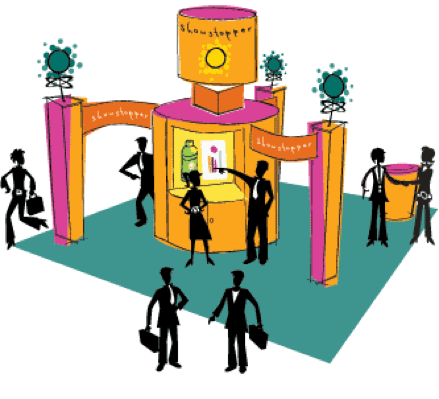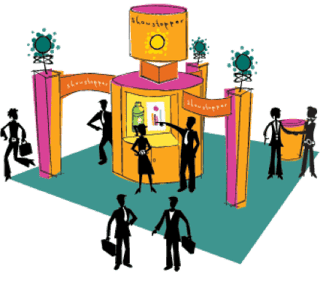How to Prepare for a Tradeshow

 Tradeshows can be a valuable part of a B2B marketing plan as they provide a great opportunity to meet new contacts, move leads through the pipeline, and keep your brand top of mind. But preparing for a tradeshow can seem overwhelming. Once your company has decided to participate in a show, what do you do next?
Tradeshows can be a valuable part of a B2B marketing plan as they provide a great opportunity to meet new contacts, move leads through the pipeline, and keep your brand top of mind. But preparing for a tradeshow can seem overwhelming. Once your company has decided to participate in a show, what do you do next?
Set Objectives for the Show
Before you can determine what to do at the show (attend, exhibit, sponsor, speak) you need to identify your objectives and the metrics you will track to determine success. The top 3 goals for exhibitors at trade shows are brand awareness, lead generation, and relationship building.1
Each of those goals will require a different approach. If your goal is brand awareness then you may want to consider sponsorship opportunities to ensure that attendees will have multiple touch points with your brand and you could consider impressions to be your primary metric. If you are looking to generate leads you may want to promote a prize giveaway or have free samples at your booth to entice attendees to visit. In this case, the number of leads generated would be the metric. If relationship building is your primary objective you may choose to host a post-tradeshow cocktail hour or expand your booth size and offer snacks and mingling in your booth and measure the number of interactions or the amount of time spent with each visitor.
Plan Your Booth
If you decide to exhibit then you need to put a lot of thought into the size, location and configuration of your booth. Consider your messaging and how you want people to engage with your booth. Do you want product on display? Do you want videos running to highlight your offering? Can you do a live demo? What collateral or prizing do you want onsite to help you attract and educate your audience?
You also need to be strategic in selecting where you want your booth. If you want product set up all around, then an island location (aisles on all 4 sides) might be the best setup for you. Consider proximity to the door, the washrooms and the food areas. While you want to be close to places that will attract attendees, you don’t want areas that will compete with your booth.
Once you’ve picked your booth size, location and have finalized the elements for your space, you will need to manage the logistics. This is an area where poor planning can be costly. Most shows will offer discounted rates for carpet, electrical, furniture and other booth elements if you book in advance. Be sure to take advantage of all the early-bird rates and avoid paying rush fees because of poor planning. As soon as you register for a show, note all the form submission deadlines to ensure you are on time. Pay close attention to your allocated move-in and move-out time as well so you can staff accordingly.
Something that is often overlooked is storage! If you ship large displays in cases or boxes to the show, once your team sets up where will they put the cases or boxes? Be sure to inquire in advance about storage so you know what can be left onsite.
Determine Staffing
It is important to send company employees who are knowledgeable, engaging and want to be there. Whether as an attendee, an exhibitor or a speaker, your staff are representing your brand. You want every attendee who interacts with your employees to have a positive experience. Make sure you share your show objectives with your staff, including the metrics you want tracked. Ensure they know what is being promoted in your booth and what materials they have onsite. They also need to be aware of set up and tear down responsibilities.
Prepare Communications
Before, during and after the show it is important to communicate with attendees. Timing is everything so be sure you have a clear plan for pre, during and post-show communications before the show starts. How are you going to let people know you are at the show? Consider sending pre-event emails. Be sure to notify anyone in your customer or prospect base that you think would be attending. Ask the show organizer if you can provide content for any pre-show emails that will be going to all attendees.
Another great way to amplify your reach is through social media. Use platforms like Twitter and LinkedIn to promote your show presence. If you are exhibiting let people know your booth number and if you are speaking, communicate the date, time and topic. Be sure to use the show hashtag to reach anyone who is interested in the show.
Great planning = Great tradeshow
If you set objectives and keep them top of mind as you plan, then you will have a successful show. But remember, tradeshows are a big investment. B2B exhibitions were 39.2% of B2B marketing budgets in 2011, the largest amount of any other marketing channel. That number has held fairly steady over the past several years.1 So be sure you get the most out of your investment. Learn more about what you need to do to estimate your tradeshow ROI
1http://www.tsnn.com/news-blogs/16-powerful-stats-value-trade-shows
.png?width=2361&height=488&name=Mezzanine%20Logo_Horiz_RGB_on%20blue%20(1).png)
